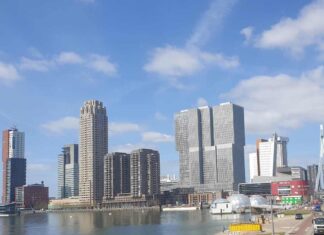by Norman Davies/ Roger Moorhouse
Central Europe has always been richly endowed with a variety of
migrants and settlers, and repeatedly been the scene of nomadic
invasions, mixed settlements and military conquests. As a result, the
area has witnessed a profusion of languages, cultures, religions and
nationalities.
The history of Silesia’s main city can be seen as a fascinating tale
in its own right, but it is more than that. It embodies all the
experiences that have made Central Europe what it is — the rich mixture
of nationalities and cultures; the German settlement and the reflux of
the Slavs; a Jewish presence of exceptional distinction; a turbulent
succession of Imperial rules; and the shattering exposure to both Nazis
and Stalinists. In short, it is a Central European microcosm.
The third largest German city of the mid-nineteenth century,
Breslau’s population reached one million in 1945, before the bitter
German defence of the city against the Soviets wrought almost total
destruction. Transferred to Poland after the war, Breslau has risen
from ruins and is again a thriving economic and cultural centre of the
region.
Review:
Praise for Europe:
“No history of Europe has been so even-handed in its treatment of east and west.” — TLS
“A fascinating story.” — Antony Beevor, The Spectator
Synopsis:
In order to present a portrait of
Central Europe, the authors of this volume have made a case study of
one of the most colourful cities, the former German Breslau, which
became the Polish Wroclaw after World War II.
About the Author
Norman Davies
is Professor Emeritus of the University of London and the author of
several books on European history including God’s Playground, Europe
and The Isles. Roger Moorhouse was the researcher for Davies’ Europe and The Isles.
More on the book in Wikipedia
Available: DE BOEKENMARKT www.de-boekenmarkt.nl 585 p., pb., Van € 18,75 voor € 8,00
Korte Molenstraat 17 A
2513 BM Den Haag
070-3658226
e-mail: boekmart@xs4all.nl
di-vrijd. 11.00-18.00
zat 10.30-17.30









